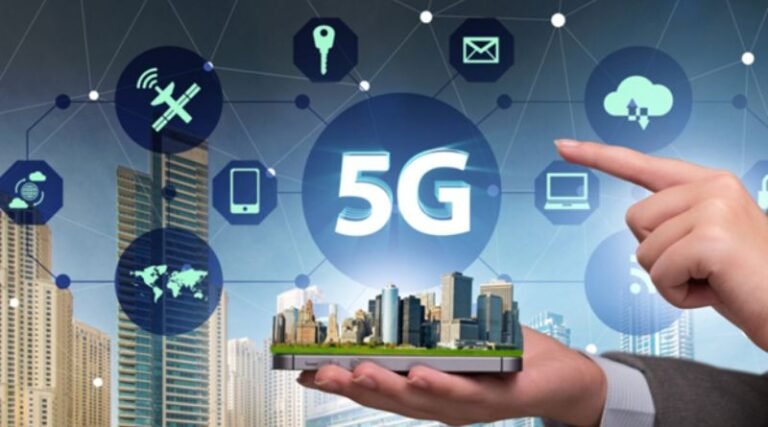The Rise of 5G: What It Means for Connectivity and Innovation
The world of technology is continuously evolving, with each new development promising to reshape how we interact with information, services, and each other. One such transformative force is the rise of 5G, the fifth generation of wireless technology. As 5G networks expand globally, they are poised to revolutionize not just connectivity but also fuel a wave of innovation that impacts industries across the board. But what exactly does 5G bring to the table, and how will it influence our digital future?
What is 5G?
5G is the latest evolution in mobile network technology, succeeding 4G LTE, which currently powers most of our smartphones. What sets 5G apart from its predecessors is its unprecedented speed, low latency, and massive data capacity. While 4G networks max out at around 100 Mbps (megabits per second), 5G promises speeds up to 10 Gbps (gigabits per second). This means that tasks like downloading large files or streaming high-definition video can happen almost instantaneously.
But 5G is about more than just speed. It also offers reduced latency— the time it takes for data to travel between points. In practical terms, this means that real-time applications, such as video calls, online gaming, and augmented reality (AR) experiences, will perform with minimal lag or interruption.
The Impact on Connectivity
The advent of 5G technology marks a significant leap forward in global connectivity. One of the key advantages of 5G is its ability to handle far more devices simultaneously than previous networks. As we continue to live in an increasingly connected world—one dominated by smartphones, wearables, smart home devices, and Internet of Things (IoT) gadgets—5G’s enhanced capacity will ensure that networks remain robust even as more devices join the digital ecosystem.
For consumers, this means a more reliable and seamless experience when using data-intensive services. Think of smart cities, where everything from traffic lights to public transportation systems is interconnected. With 5G, these systems can communicate faster and more efficiently, creating smoother urban experiences for everyone.
For businesses, the reliability and speed of 5G will open doors to new ways of working. Telecommuting, video conferencing, and cloud collaboration will become even more effective, as 5G reduces lag time and data congestion. This enhanced connectivity also promises to fuel innovation in sectors like healthcare, transportation, and manufacturing.
Innovation Across Industries
The introduction of 5G isn’t just about better phone service—it’s a catalyst for widespread innovation across a multitude of industries. Let’s explore some key sectors where 5G is already making an impact:
1. Healthcare
5G is set to revolutionize healthcare by enabling real-time remote monitoring and telemedicine on a scale never before possible. Doctors will be able to conduct complex surgeries remotely using robotic equipment that responds instantly to their commands, thanks to 5G’s ultra-low latency. Wearable devices that monitor patient vitals in real-time can send data directly to healthcare providers, allowing for more personalized care and faster interventions.
2. Transportation
In the automotive world, 5G will pave the way for safer, smarter, and more efficient transportation systems. Autonomous vehicles, for example, rely heavily on real-time data communication to navigate streets, avoid obstacles, and make split-second decisions. 5G’s speed and reliability will ensure that these cars can operate with precision, potentially reducing traffic accidents and improving overall road safety. Additionally, smart cities equipped with 5G will enable intelligent traffic management systems that reduce congestion and improve public transit efficiency.
3. Manufacturing
In manufacturing, 5G is poised to boost the development of “smart factories.” These facilities will be powered by interconnected machines and robots that can communicate instantly to optimize production processes. This kind of automation not only increases efficiency but also helps manufacturers identify potential issues before they become costly problems. The reduced latency and massive capacity of 5G will support the vast number of sensors and devices needed for these factories to operate seamlessly.
4. Entertainment and Media
For consumers, 5G will transform how we experience entertainment. Imagine streaming 4K movies or playing graphically intensive video games with zero buffering or lag. Virtual reality (VR) and augmented reality (AR) experiences will become more immersive and responsive, thanks to the high-speed data transfers and low latency that 5G enables. This will allow for everything from lifelike virtual worlds in gaming to more effective remote training simulations in education and the workplace.
5. Agriculture
Even agriculture stands to benefit from 5G technology. Farmers can use IoT sensors and drones to monitor crop health, soil conditions, and weather patterns in real-time, leading to more efficient and sustainable farming practices. Automated machinery, supported by 5G connectivity, can also take over labor-intensive tasks, allowing farmers to optimize resources and increase yields.
The Challenges of 5G Adoption
While the potential of 5G is clear, widespread adoption is not without challenges. One of the biggest hurdles is infrastructure. The high-frequency signals used by 5G don’t travel as far as 4G signals, meaning that network providers need to install a dense network of small cells—essentially miniature base stations—throughout cities and rural areas to ensure consistent coverage.
There are also concerns around security and privacy. As 5G facilitates the connection of more devices, including critical infrastructure like healthcare and transportation systems, the risk of cyberattacks increases. Ensuring that 5G networks are secure will require investment in robust cybersecurity solutions to protect the massive amount of data flowing through these networks.
Conclusion
The rise of 5G is more than just an upgrade in mobile network technology—it is a driving force behind the next wave of technological innovation. By offering faster speeds, lower latency, and greater connectivity, 5G will not only improve our day-to-day digital experiences but will also unlock new possibilities across various industries. From healthcare and transportation to entertainment and agriculture, the potential applications of 5G are vast and exciting. As this technology continues to develop and expand, we can expect a future where connectivity fuels unprecedented levels of innovation, transforming our world in ways we are only beginning to imagine.

